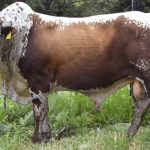ZIMBABWE HERD BOOK-YEAR OF THE NKONE 2023
NEWSLETTER FROM HHN and MH NKONE STUDS
No 3 (16th OCTOBER 2022)
By SEKURU
Hot days and strong, hot winds continue and some very bad fires have occurred round the country including one at Esigodini where 10 people lost their lives. Our sympathies are with their families. Another bad fire swept through parts of Macheke/Marondera causing total loss of grazing on some farms, and I have heard of another serious fire which has devastated valuable grazing over a large area on the Bulawayo Road just beyond Norton. Apparently, the fierce winds caused it to jump the dual highway to Bulawayo. Once a fire gets going in tall dry grassland with the heat and wind, there is very little that can stop it and most fireguards are superfluous. Some fires are, I suppose accidental and very few can occur naturally, but too many are deliberately started due to ignorance or just plain defiance of the law and normal, thoughtful decent behaviour.
Our calving season is just a few weeks away now and we have already had a preview of a few new early calves sired by our imported sires from when one of them got into the cows’ night paddock. We found the culprit in the morning, so recording integrity remains intact. Sadly, we lost UCP 14-47, Ngungunyana, the older of our two imported bulls. It was one of those bizarre happenings that just leaves one helpless, depressed and furious and very angry at the same time. Much of our cattle grazing-time is spent along the considerable area of floodplain covered in Panicum repens on the edge of the dam and they have learnt to wade out to graze on the succulent grasses on higher areas such as anthills, emerging from the receding water level. Ngungunyana was doing just that when he got tangled up in a poachers fishing net below water level. He tried to get back to shore but became more entangled and fell over, his head under water. One of the herdsmen noticed what was happening and got into the water, trying to raise the bulls head above water. An impossible task, even if there had been more people, because of the massive weight of the bull’s head and neck and the violent struggling. Ngungunyana drowned.
Very sad, but we do have a calf crop of 26+ coming from him in the near future from very good cows and there will be some special calves and hopefully a top young bull to carry on his bloodline. In addition, we took semen from both imported bulls when they were in quarantine so we also have that insurance. This leaves us with UCP 16-18 for next bulling season at the beginning of February and about 75 cows and heifers to get in calf in our 42-day bulling season!! We are still working things out but might AI for 21 days before bulling starts using UCP 14-47 semen and catching those cows that come on heat very soon after calving, thereby reducing the number to be bulled normally in 42 days by UCP 16-18. We could achieve the same by using a very good home-bred young bull, 19-8139ANG, 21 days before the main bulling. Whatever happens, we do not want to bull any later than our present last bulling day, 10th March. We can then easily get back to our standard 42-day annual bulling dates, 27th January to 10th March, which have become sort of set-in-stone.
Today while I watched the cow herd grazing along the dam edge, the most relaxing and pleasant occupation I can think of, I realised once again, that one should always look at cattle out on grazing to really assess their condition and well-being. They never look as good as they really are when in the dip kraal on dip day.
I also realised the huge value of the perennial green bite we get along the dam edge from the well-established natural pasture of Panicum repens. This grass survives flooding and then emerges vigorously as the water level recedes and is constantly fertilized by our cattle dung and nutrients brought down river during the floods. The Panicum thrives on the annual cycle of flooding and renewed nutrients. I Google Mapped and measured it and the Repens pasture is about 130Ha in extent. This is more than 1/3 of the total grazing we have available on this 400Ha tobacco farm. When we first leased this grazing, the dam seemed a huge disadvantage to us because of Liver Fluke and Roundworm dangers. We take regular dung samples and the cattle have never tested to have any meaningful infestation of either, but despite this, we still routinely dose calves for both at three and seven months. We could do with another 150 hectares of this Panicum flood plain! Nkone are so very adaptable they will make the very best of whatever grazing that you have. They do well on average grazing but achieve very high performance on good grazing.
I am including a table of results after our last PD’s (2022 bulling season) which show some useful information on monitoring mating’s and importantly, the percentage of cows mated in the first 21 days of bulling. The table also shows the excellent fertility of the Nkone, considering this is only our second 42-day bulling season with relatively new herds and we are still building numbers, so we have not been as harsh on selection as we could have been.
As my Senior Herdsman said on monitoring of the mating and the discrepancy between recorded mating’s and PD’s. –
“Some of them fall in love in the afternoon, and when it gets dark they all go to bed and we don’t know what happens then!”

UPB 14-47 Ngungunyana

UPB 16-18 Soshangana










